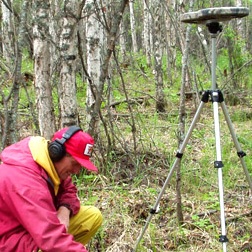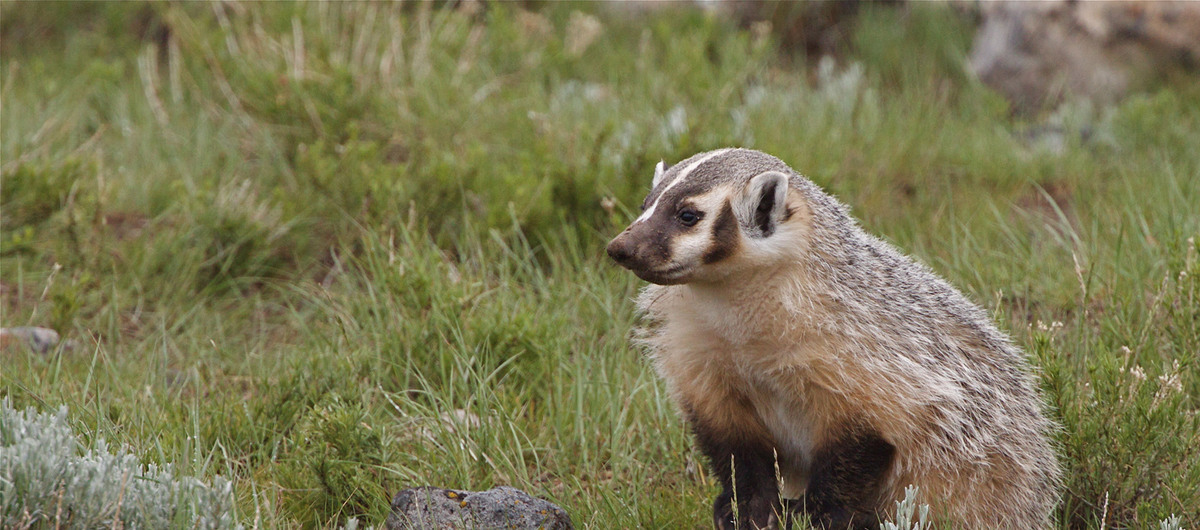
Our History
OUR HISTORY
A Comprehensive Monitoring System
The ABMI as we know it officially began operations in 2007. A small team was motivated to answer a pressing question: how can we evaluate the combined effects of human activities on Alberta’s natural environments? Alberta was a province in transition, with a growing population and demand for natural resources, that needed a comprehensive system effective across multiple scales to monitor changes in Alberta’s ecosystems.
While we formally incorporated as a not-for-profit in 2007, the idea behind the ABMI was born long before. The program emerged from a decade of planning and testing. We developed protocols to monitor seven taxonomic groups determined by our scientific advisors to be useful indicators of ecosystem health as well as protocols aimed at monitoring habitats. Through these pilot years, we refined the protocols by focusing on key questions like, “can this be implemented in a standardized and cost-effective way across the whole province?” and “does it produce the data needed to evaluate cumulative effects?”


We started out visiting 80 field sites across the province in our first year. In that first year alone, we collected 156 species of soil mites (an important indicator of soil health), of which 106 were new to Alberta, 10 were new to Canada, and seven were new to science! Since then, our team has grown to include over 80 full time-staff and close to 40 seasonal field and data processing team members. Our work has also grown, and includes new forms of monitoring and reporting on the world around us:
- The Geospatial Centre launched in 2013, focused on the mapping and monitoring of Alberta’s landscapes using remote sensing.
- We launched the WildTrax platform in 2019; as of 2023, it manages over 66 million photos and 620,00 audio recordings from over 200 organizations.
- Using acoustic recordings from autonomous recording units (ARUs) alongside WildTrax, we’ve expanded to monitoring an eighth taxonomic group, amphibians!
- In 2023, we published the first edition of the Wetland Atlas, an interactive online report about wetlands, their inhabitants, and wetland research in Alberta.
- In the early 2010s, we initiated the Community-Based Monitoring and Engagement Unit, dedicated to working with Indigenous communities on biodiversity monitoring.
Find all our annual reports, from 2007 to today, in our publications archive.


Programs have shifted over the years: we participated in the Ecological Monitoring Committee for the Lower Athabasca in the early 2010s; NatureLynx’s dedicated community of users contributed over 21,000 sightings of species over its five years of operations; and we changed from winter tracking to using remote cameras to monitor mammals. In 2021, we shifted our taxonomic team from the Royal Alberta Museum to the University of Alberta to centralize our staff, increasing the odds of learning something new about liverworts at the water cooler. Working at the ABMI is a commitment to learning and adapting, and we wouldn’t want it any other way.
In 2022, we launched Biodiversity Pathways, a national affiliate committed to supporting work that spans geographic borders such as research on caribou recovery and environmental sensor data management. The aim of this affiliate is to develop, support, and implement science-based monitoring with our neighbouring provinces and territories. In 2023, the Caribou Monitoring Unit rebranded to be the Wildlife Science Centre under Biodiversity Pathways in recognition of its growing sphere of work on more than just caribou in British Columbia and beyond.
In 2017, after a decade of operations, we undertook a thorough review of our programs to understand the extent to which we'd accomplished what we set out to do. This review was overseen by external panels of scientific experts and senior leadership in sectors such as government, industry, and environmental non-profits.
We couldn’t have done it all without our delivery partners, InnoTech Alberta, the University of Alberta, and the University of Calgary. And, of course, our work is made possible by our dedicated staff–some have been with us since the very beginning! Over the years, our team has reimagined how the ABMI can respond to evolving technologies and environmental needs and grown alongside these changes. From satellites to spectrograms, we’re excited to be a part of whatever the future brings!
